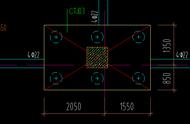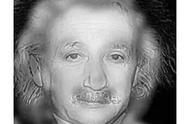ZME Science的标题更是吓人:To say that Asia is having an eye problem is an understatement.说是“亚洲近视”都不为过。
近视的原因到底是什么?
China Daily的报道总结了近视的几大原因:
Several factors are associated with the high rate of nearsightedness in China's children and teenagers, including lack of outdoor physical activity, lack of adequate sleep due to heavy extracurricular work and excessive use of electronics products.
有若干个因素与中国儿童和青少年近视率高有关,包括缺乏户外体育活动、课余作业繁重导致睡眠不足,以及过度使用电子产品。

久坐不出门、睡眠少、看手机多,这说的不就是我吗?
书本拿太近,电子产品用太多已经是老生常谈了。但发表在权威杂志《眼科》上的一项研究显示户外活动的确是一个重要因素:
Biologists compared Singaporeans living in Singapore to those living in Australia. They found that 29 percent of the Singaporean students had myopia compared with just 3 percent in Sydney. The main correlation was once again, time spent outside.
生物学家把居住在新加坡的新加坡人与居住在澳大利亚的新加坡人作了比较。他们发现29%的新加坡学生患有近视,而在悉尼的那一组中就只有3%。主要的关联再次出现在花在户外的时间上。

“The big difference was the Chinese children in Australia were outdoors a lot more than their matched peers in Singapore,” says Ian Morgan, a retired biologist at Australian National University, who coauthored the 2008 study. “This was the only thing that fit with the huge difference in prevalence.”
澳大利亚国立大学退休生物学家伊恩·摩根表示:“两组之间最大的不同在于,与新加坡的同龄人相比,澳大利亚的华裔在户外活动的时间多得多。这也是唯一能解释近视率巨大差异的因素。”

最后来回顾一下与视力相关的单词吧!
近视可以叫nearsightedness,也可以叫shortsightedness,医学上叫做myopia.
同理,远视就是farsightedness,或者longsightedness,前一个偏美式,后一个则偏英式,学术上的远视叫做hyperopia.
Notes
myopia /maɪˈoʊpiə/ n.近视
hyperopia /haɪpəˈoʊpiə/ n.远视
bifocals /baɪˈfoʊklz/ n.双光眼镜(上半片为看远,下半片为看近)
retina /ˈretɪnə/ n.视网膜
lens /lenz/ n.(眼球的)晶状体
prevalence /ˈprevələns/ n.流行;盛行
understatement /ˈʌndəsteɪtmənt/ n.保守说法;低调说法;轻描淡写
编辑:唐晓敏
实习生:崔莺馨
来源:The Lancet《南华早报》ZMEScience Ophthalmology NPR等
来源:中国日报双语新闻微信















